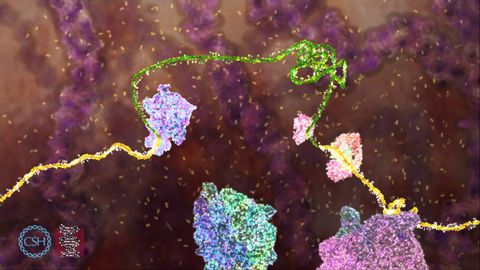
Subtitles & vocabulary
The Central Dogma of Biology
00
Szu-Pei Wu posted on 2018/10/29Save
Video vocabulary
process
US /ˈprɑsˌɛs, ˈproˌsɛs/
・
UK /prə'ses/
- Transitive Verb
- To organize and use data in a computer
- To deal with official forms in the way required
- Noun (Countable/Uncountable)
- Dealing with official forms in the way required
- Set of changes that occur slowly and naturally
A2TOEIC
More protein
US /ˈprəʊˌtiːn/
・
UK /ˈprəʊti:n/
- Noun (Countable/Uncountable)
- Group of molecules made from amino acids
B1
More genetic
US /dʒəˈnɛtɪk/
・
UK /dʒəˈnetɪk/
- Adjective
- Of, relating to, or controlled by genes
- Relating to genes or heredity.
B1
More Use Energy
Unlock All Vocabulary
Unlock pronunciation, explanations, and filters
